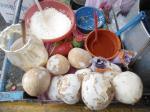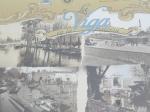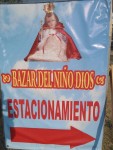The restaurant ‘El Penacho de Moctezuma‘ with its multicoloured facade of Moctezuma‘s (Aztec Emperor at the time of the Spanish conquest) headdress stands out in the streets of Guerrero, a reminder of Mexico’s pre-colonial history.
The Spanish quickly set about converting the indigenes, churches mushroomed across the city. Guerrero is no exception.
I had a good, long chat with a young homeless guy who told me about a video project that he narrated called ‘Voces de la Guerrero’ (Voices of Guerrero). The video documents aspects of living on the streets of Mexico City around the Guerrero neighbourhood. Check it out! (Subtitled in English)
Mexico City is also a city of markets. The market ‘Martinez de la Torre’ in Guerrero, like any good market, has a good selection of naturally flavoured fruit ‘waters’.
Finally, megalopolises produce phenomenal amounts of waste and sometimes it is just too much for the city’s waste management services to handle.
El restaurante ‘El Penacho de Moctezuma‘ destaca en las calles de Guerrero por su fachada que representa, bueno, ‘El Penacho de Moctezuma‘ un recuerdo de la historia pre-colonial de México.
Los españoles rapidamente empezaron a convertir la gente indigena. Iglesias aparecieron por toda la ciudad. Guerrero no es excepción.
Hablé un buen rato con un joven sin hogar. Me habló de un proyecto de video que él narró. Se llama ‘Voces de la Guerrero’. El video documenta la vida de personas que viven en las calles alrededor de Guerrero. Échale un vistazo! (Arriba)
La Ciudad de México es también una ciudad de mercados. El mercado ‘Martinez de la Torre’ en Guerrero, como cualquier mercado bueno de la ciudad, tiene una buena variedad de aguas de sabor.
Finalmente, una megalópolis produce mucha basura, a veces es demasiado y no se queda otro lugar salvo la calle para ponerla!




























































































































































































